Wonderful landscapes, hidden coves, sheer cliffs, colorful villages: the Cinque Terre, in Liguria, attract millions of travelers from all over the world every year for their unquestionable scenic charm and uniqueness, which shows how, in these parts, human beings have been able to adapt to living in a rugged and difficult territory where nature is stingy. But what do the villages of the Cinque Terre (from the south: Riomaggiore, Manarola, Corniglia, Vernazza and Monterosso al Mare) give to art enthusiasts who want to immerse themselves in paintings, sculptures, architecture from centuries back and present day? Let’s look at some ideas for an. artistic trip to the Cinque Terre.
Located on the short side of a small square overlooking the lower part of the village of Riomaggiore, the parish church of San Giovanni Battista in Riomaggiore was founded in 1340 by the then bishop of Luni, Antonio Fieschi: however, the appearance with which it looks to the visitor on the outside today is the result of 19th-century works (of 1870-1871) that endowed it with its current neo-Gothic facade. The interior, with a nave and two aisles tracing the original layout (two Gothic portals decorated with earlier reliefs of antelamic culture remain visible, however), preserves several valuable works of art: a 15th-century triptych with the Madonna and Saints Roch and Sebastian (attributed to the Master of the Cinque Terre, an anonymous local painter active between the late 15th and early 16th centuries and linked to the transitional culture between late Gothic and Renaissance), a 17th-century pulpit decorated with a 1530 marble relief depicting St. Martin in the act of giving his cloak to the poor man, and a wooden crucifix attributed to Anton Maria Maragliano, one of the major sculptors of the 18th-century Ligurian period.

The great Macchiaiolo painter Telemaco Signorini, who often frequented Riomaggiore, portraying it in many of his paintings, executed many views of the village from the Sanctuary of Nostra Signora di Montenero, which stands on a hill overlooking it. It is a building of worship attested as early as 1335, although its present appearance is that of 19th-century remodeling. According to legend, the image depicting theAssumption of the Virgin preserved in the shrine was allegedly brought here by Greek refugees at the time of the Byzantine iconoclasm. It is best known for the views it offers, and it can only be reached via the paths that cross the headlands.
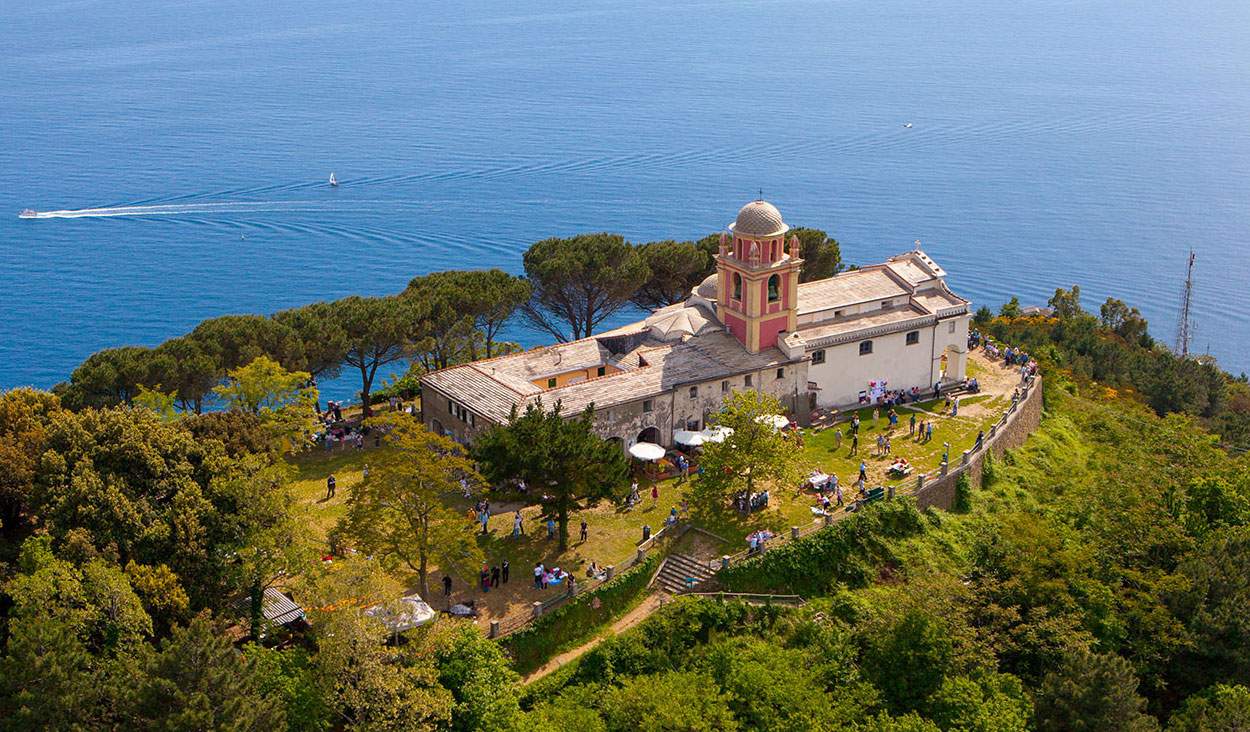
Another 14th-century church (the foundation, as stated in the plaque on the facade, dates back to 1338), it has maintained its Gothic salient facade, with a Carrara marble rose window in the center (it dates back to 1375 and is attributed to two Campionese masters, Matteo and Pietro da Campilio) and the portal surmounted by a lunette decorated with reliefs of Antelamic culture. The interior of the church has been altered over the centuries and is now in its Baroque appearance, although, following 20th-century restorations, parts of the original Gothic forms can be seen. A triptych with Saint Lawrence between Saints Anthony Abbot and Bernardine of Siena, and a polyptych on the high altar with the Madonna and Child between Saints Lawrence and Catherine of Alexandria and two other saints are owed to the Master of the Cinque Terre.

The church of San Pietro di Corniglia, the main church in the third village of the Cinque Terre, is mentioned as early as 1261 in a document, but it is possible that it is even older: the present building was in fact built in the 14th century on the remains of an earlier small temple, the remains of which are still partly visible. It is one of the churches in the Cinque Terre that have best preserved their original appearance: this can be seen from the salient facade in which the Carrara marble rose window, dated 1351, by Matteo and Pietro da Campilio, authors also of the rose window in the church of Manarola, stands out. The three-aisled interior is still partly preserved as it was originally, although it underwent extensive interventions in the Baroque period: it preserves a medieval baptismal font (from the 12th century) and a 17th-century painting of the mysteries of the Rosary.

This is a small oratory of 18th-century origin located in the center of Corniglia. The simple facade is decorated with a bare circular window and a niche housing a statue of St. Catherine of Alexandria, to whom the building is dedicated. The one-room interior features an 18th-century frescoed ceiling depicting the episode of the martyrdom of St. Catherine of Alexandria. Today the oratory has also become a venue for contemporary art exhibitions: in the summer of 2021, for example, it hosted a major solo exhibition by Iva Lulashi, an emerging talent in European art.

An interesting Romanesque-style building, largely well preserved, it stands above a cliff in a very scenic location. Legend attributes the foundation to a miracle: apparently some inhabitants of Vernazza had found, on the village beach, a chest containing a relic of St. Margaret of Antioch and thus decided to dedicate a church to her. Myths aside, the building probably dates back to the 11th century, although it was later rebuilt in the 13th century and enlarged between the 16th and 17th centuries. The façade is unfortunately no longer preserved because it was demolished during the seventeenth-century renovations, but the medieval exterior decoration is still visible in the apsidal part. With the restorations in the 1960s, it was decided to bring back the original appearance and recover the wooden roof. Inside are two 17th-century canvases, a Baroque high altar from 1750, and a wooden crucifix attributed to Anton Maria Maragliano.
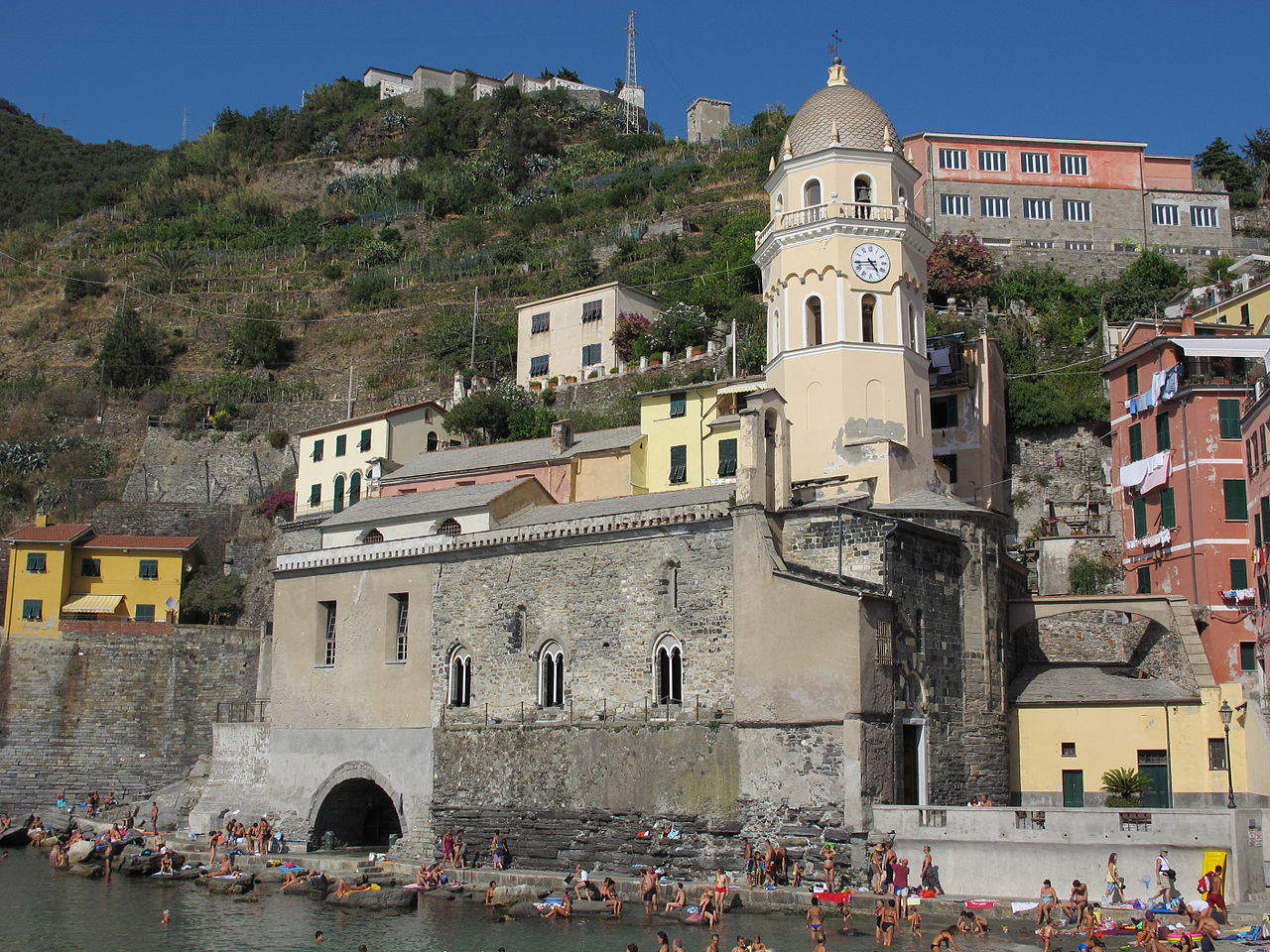
The church of San Giovanni Battista, built between the thirteenth and fourteenth centuries (work, as an inscription above a column inside attests, was completed in 1307), is the main church of Monterosso al Mare, the northernmost and largest of the Cinque Terre villages. The scenic 1307 facade has two-tone horizontal stripes of white marble and dark serpentine (a decoration often found in churches in Liguria), and in the center features a large marble rose window. It is one of the most interesting 14th-century buildings in the Cinque Terre: the interior, with three naves, although extensively remodeled, traces the original layout while still preserving medieval capitals, and houses a baptismal font from 1360, a painting depicting the Madonna of the Rosary by the Cambiasca school, a 17th-century Crucifixion, and a high altar from 1734.
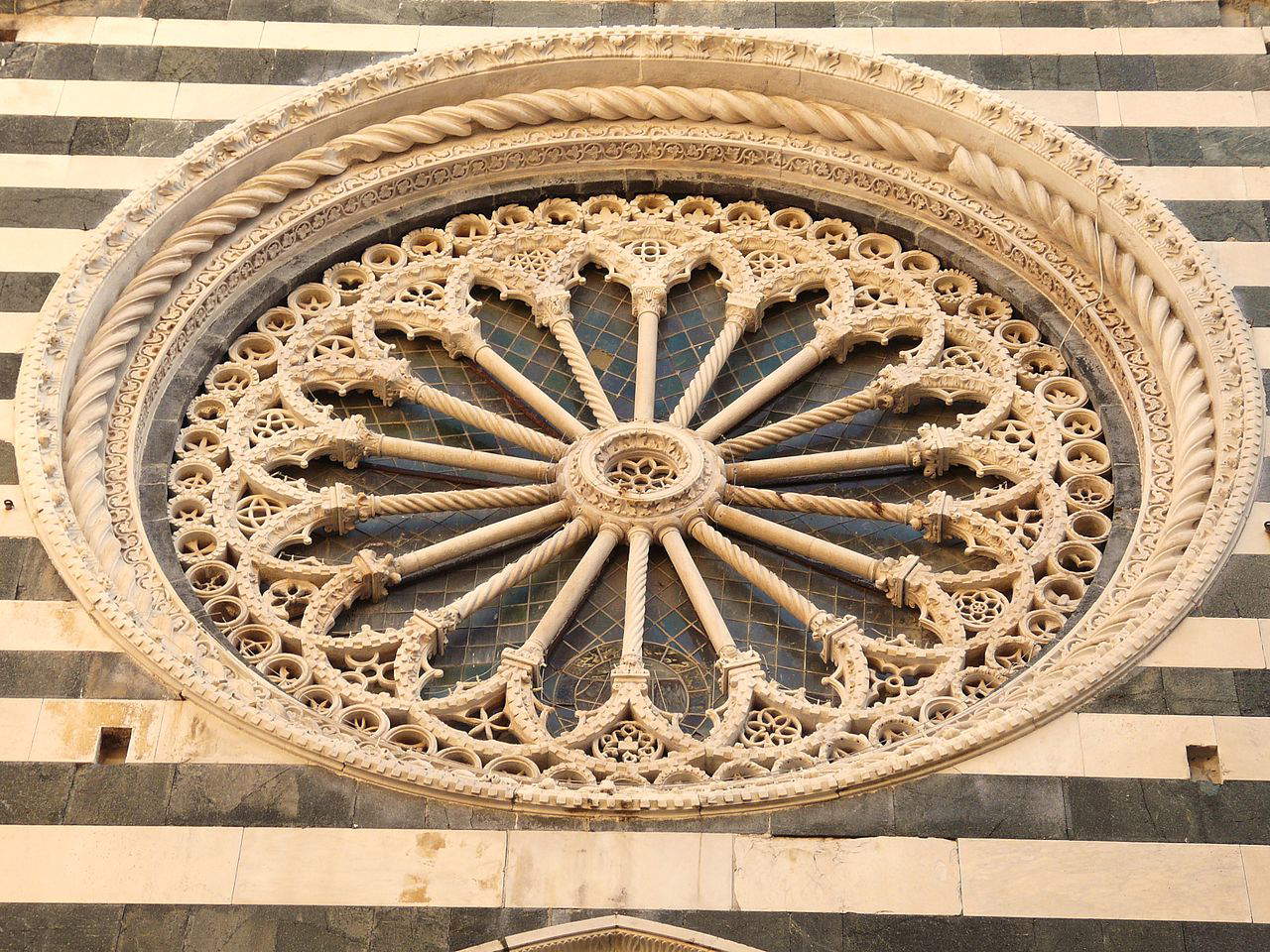
This is one of the richest places of art in eastern Liguria. It stands on the top of the promontory that divides Monterosso from Fegina, slightly outside the village, and was founded in 1618, on the initiative of a group of Capuchin friars who had received land as a gift from the municipality of Monterosso. Construction was completed in 1622, while the following year Bishop Giovanni Battista Salvago consecrated the convent church, dedicated to St. Francis of Assisi. Several significant works of art are preserved in the 17th-century church itself: a Crucifixion attributed to Antoon van Dyck, a Penitent Saint Jerome by Luca Cambiaso, and a Veronica by Bernardo Strozzi. In 2013, flooding in the Cinque Terre caused the collapse of an exterior wall of the original structure, and the following year the Capuchin monastery in Monterosso al Mare was one of the most voted sites in the “Places of the Heart” of the FAI - Fondo Ambiente Italiano, with over a hundred thousand preferences. Capuchin friars still live in the convent today.

The Literary Park dedicated to Eugenio Montale was inaugurated, thanks to a collaboration between the Cinque Terre National Park, the Dante Alighieri Society and the Municipality of Monterosso al Mare, in 2015, on the fortieth anniversary of the Nobel Prize for Literature received in 1975 by the great poet Eugenio Montale, who used to frequent the Cinque Terre (he used to stay in the summer in Monterosso itself). Located on the coast of Fegina, it also offers the possibility of seeing (albeit from the outside, as it is still a private residence) the poet’s summer residence, now part of the Park: for Montale, this house was “the yellowish pagoda” and the “house of the two palm trees.” Inside the Park, numerous plaques allow visitors to experience these places through Montale’s words. Another of the Park’s focal points is the Spiaggia del Gigante (Giant’s Beach), where the Statue of the Giant, a large sculpture depicting Neptune, is located, a 1910 work by Arrigo Minerbi that decorated Villa Pastine (a sumptuous and flamboyant residence that for Montale was... “a dream, or a delusion”): after the destruction of the latter during the World War, the sculpture was placed in its present arrangement on the beach.
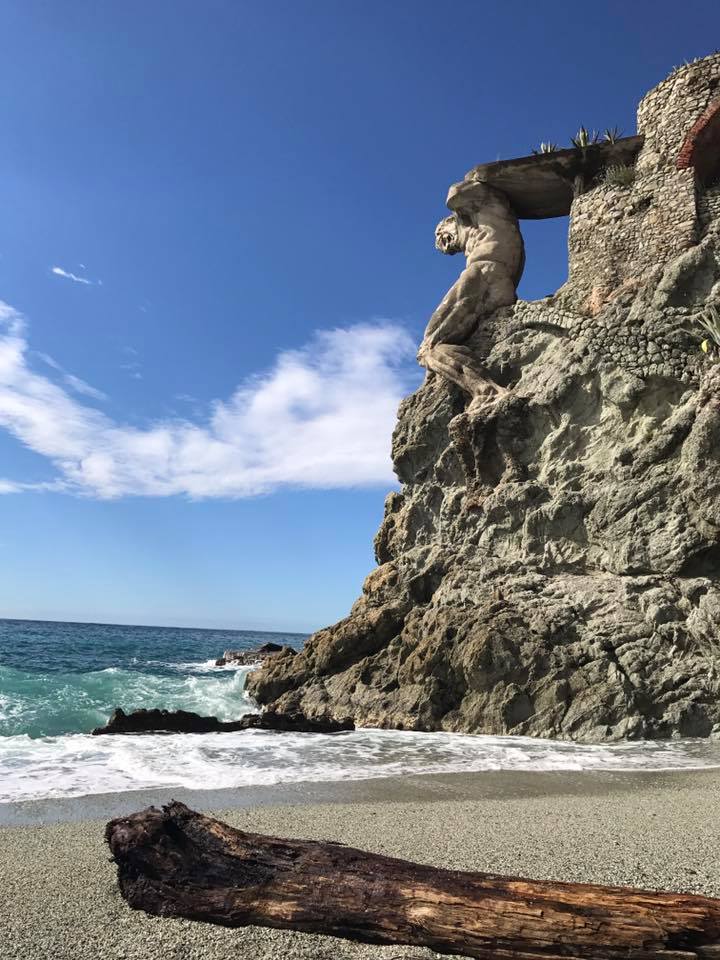
A little trespassing to see an interesting complex: Levanto is not part of the Cinque Terre, but it is the first town one encounters coming out of Monterosso al Mare, and the 15th-century church and convent of Santissima Annunziata will not disappoint the art-seeking traveler. The structure was built in an area overlooking the village of Levanto to house a community of Franciscan minors. As a result, the building is characterized by its simplicity and sobriety, but the interior houses some works of great interest: in particular, two paintings, a Saint George and the Dragon by Pier Francesco Sacchi of Pavia and one of Bernardo Strozzi’s most beautiful canvases, the Miracle of Saint Diego. In what was once the convent’s refectory and is now instead a conference room, it is also possible to observe a Supper at Emmaus by Giovanni Battista Casoni, a painter from Lerici who was among Domenico Fiasella’s most talented pupils.
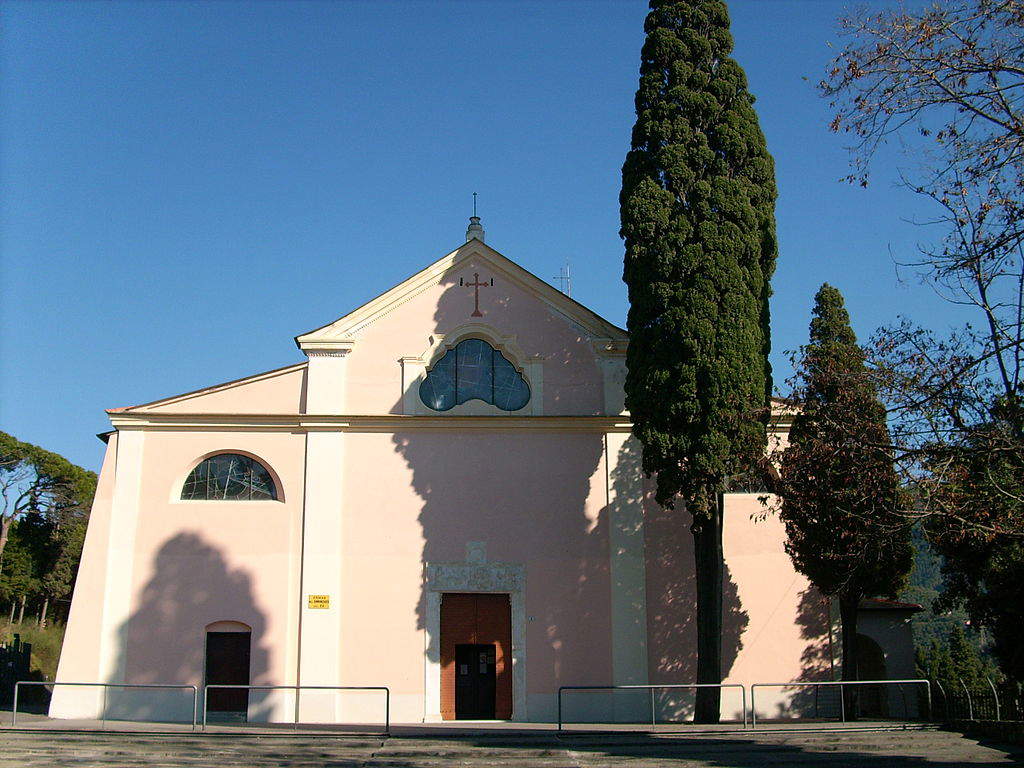
 |
| Art in the Cinque Terre: 10 places to see between Riomaggiore and Monterosso al Mare |
Warning: the translation into English of the original Italian article was created using automatic tools. We undertake to review all articles, but we do not guarantee the total absence of inaccuracies in the translation due to the program. You can find the original by clicking on the ITA button. If you find any mistake,please contact us.